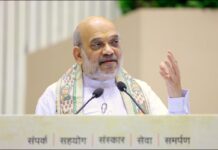 DAVIS, Calif.: Miguel Davila had reasons to be skeptical when the University of California, Davis dedicated a bright, clearly marked space on campus for students who were brought to the U.S. illegally as children.
DAVIS, Calif.: Miguel Davila had reasons to be skeptical when the University of California, Davis dedicated a bright, clearly marked space on campus for students who were brought to the U.S. illegally as children.
Being unauthorized to live and work in the country he has called home since he was 9, had forced the native of Peru to twice turn down admissions offers from other schools because he couldn’t afford to go. He changed the subject when friends asked why he didn’t apply for financial aid.
Relief has replaced whatever doubts the 21-year-old Davila held about the resource center that opened last fall and serves an estimated 200 Davis students lacking lawful immigration status.
Located in the heart of campus in a building that also houses programs for American Indian, black, Latino, Southwest Asian and LGBT students, it’s become his go-to place to hang out between classes.
With immigration reform stalled in Congress, a small but growing number of colleges are rolling out their own welcome mats for young people residing in the country illegally or, like Davila, under temporary deportation reprieves.
Schools in California, Illinois and other states with large immigrant populations are offering in-house grants, scholarships from private donors, law clinics and additional support for such students.
In the seven months since the UC Davis center opened with a $500,000 budget and a full-time director, Davila has received legal advice on studying abroad, career and mental health counseling – and a sense of belonging.
“It’s been really empowering for me to have people outside my immediate family encouraging me and telling me I’m doing good and I’m here for a reason and I can do anything,” he said.
St. Peter’s University in New Jersey announced in November that it was creating a center like the one at UC Davis. Emory University in Atlanta, New York University and Tufts University outside Boston plan to start allowing immigrant students enrolled this fall to compete with U.S. citizens for need-based financial aid.
“The things we do for our undocumented students are no different than what we should do for all of our students, which is help them succeed,” said Daniel Lopez, associate vice president for student affairs at Northeastern Illinois University in Chicago, which has assigned an adviser and trained faculty to work with about 265 Eastern European, Korean and Latin American students.
The efforts build on the passage in at least 21 states of laws or policies allowing unauthorized immigrants to pay resident tuition rates at public institutions. Those immigrants are often referred to as “Dreamers” after the long-delayed federal DREAM Act that would create a path to citizenship for some immigrant U.S. high school graduates.
The trend has not been without controversy. After California State University, Long Beach created a staffed meeting place for its estimated 650 Dreamers in March, members of the College Republicans chapter at the school asked the system’s governing board to intervene.
So far, the Board of Trustees has declined.
“We just think the university is doing special treatment to this one group of students instead of spending the $96,000 that went to the center in a way that would benefit everybody, including undocumented students,” said Nestor Moto Jr., the chapter’s chairman.
Immigrant youth in California have found an unexpected ally in Napolitano, a former Homeland Security secretary. The state is one of five where students who are ineligible for federal aid and loans because of their immigration status can apply for state financial aid.
Undocumented students and supporters previously argued that Napolitano had overseen a record number of deportations as head of the federal agency, and they were the most vocal critics of her 2013 appointment to lead the 10-campus UC system.
After assuming the post, Napolitano pledged $5 million to support UC’s unauthorized immigrant students, estimated at about 2,000 this year.
Money has been directed to financial aid and to fund the Davis student center and related offices at six other campuses. Two lawmakers have proposed expanding to the rest of the state’s public universities and 112 community colleges. -AP






